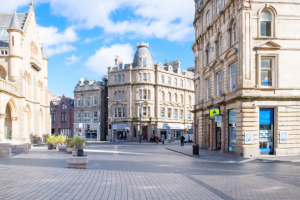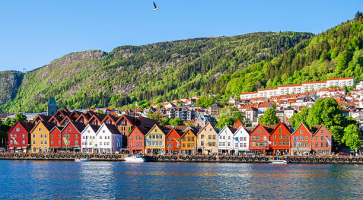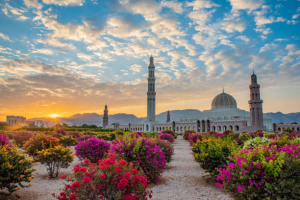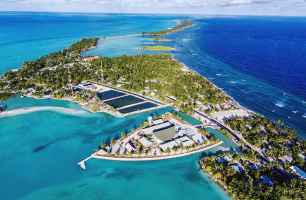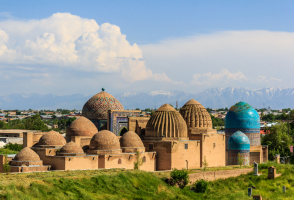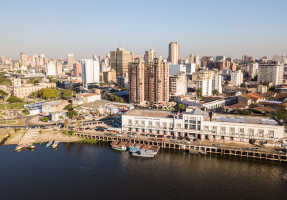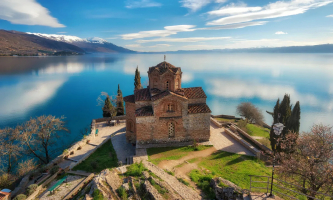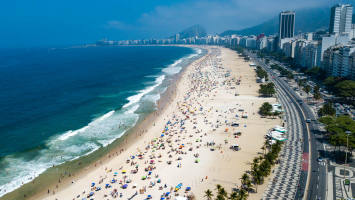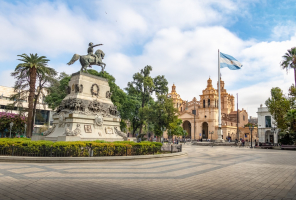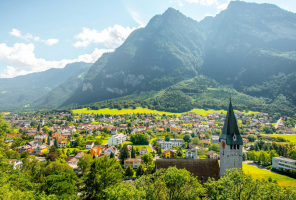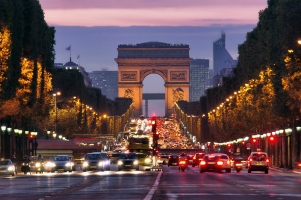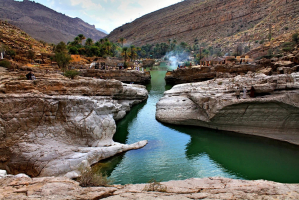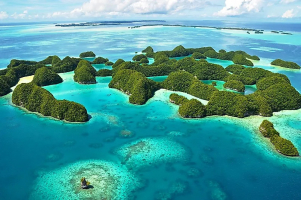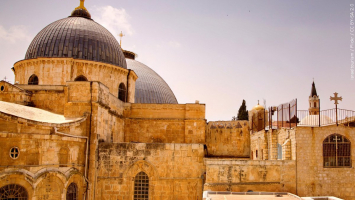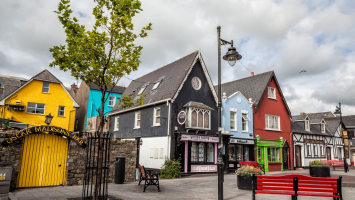Top 8 Reasons to Visit Osaka
Osaka is a mesmerizing city that offers some of Japan's best cuisine, culture, and nightlife. It combines retro charm with modern flair. In this post, Toplist ... read more...will share some reasons to visit Osaka so don't skip it!
-
Food is definitely one of the reasons to visit Osaka. Tenka no Daidokoro (literally, "the nation's kitchen"), Osaka's nickname, originally related to its role as the center of Japan's rice trade during the Edo Period. Today, it speaks of its status as a culinary haven. Osaka residents are reputed to spend more money on food than any other item, and the phrase "kuidaore" (literally, "eat until you drop") is used to define the city's food culture. Restaurants must uphold high standards or risk closing since residents have high expectations for the caliber of their cuisine. It should come as no surprise that Osaka is known for a number of regional specialties, some of which have achieved national and even international recognition.
The most well-known food from Osaka is probably Okonomiyaki. Between an omelette and a pancake, okonomiyaki is a Japanese classic that can be made in countless different ways by adding your favorite types of meat, fish, or noodles. Kitsune udon, a thick noodle soup covered with fried tofu, and hakozushi (sushi pressed flat in a bamboo box; an edible tapestry) are further favorites from Osaka. Literally translated as "grilled octopus," takoyaki is the typical food of Osaka. A unique takoyaki pan is used for frying the batter, which is made of flour and eggs, with a filling of octopus slices, pickled ginger, and green onions. To finish this well-known street food, takoyaki sauce and additional toppings such as mayonnaise, green laver (aonori), and dried bonito (katsuobushi) are added. Diners feeling more daring might order Tessa, a type of sashimi prepared from toxic fugu or globefish. Professional chefs are taught to use precisely the right amount of poison to numb the lips but not to halt the heart.
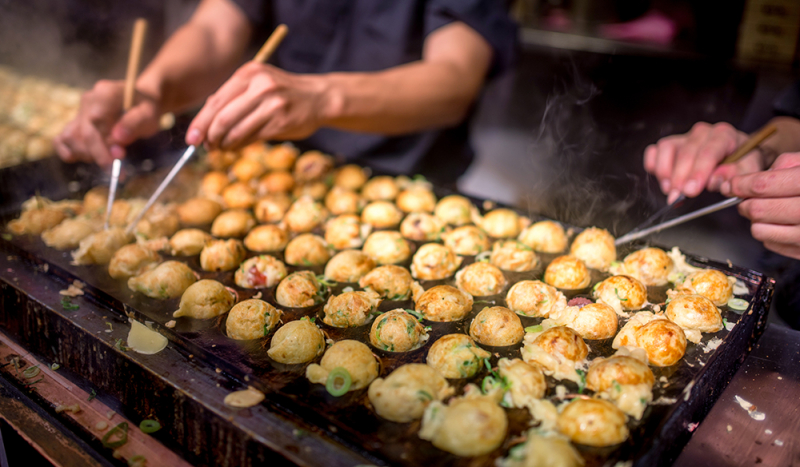
Photo: International Traveller 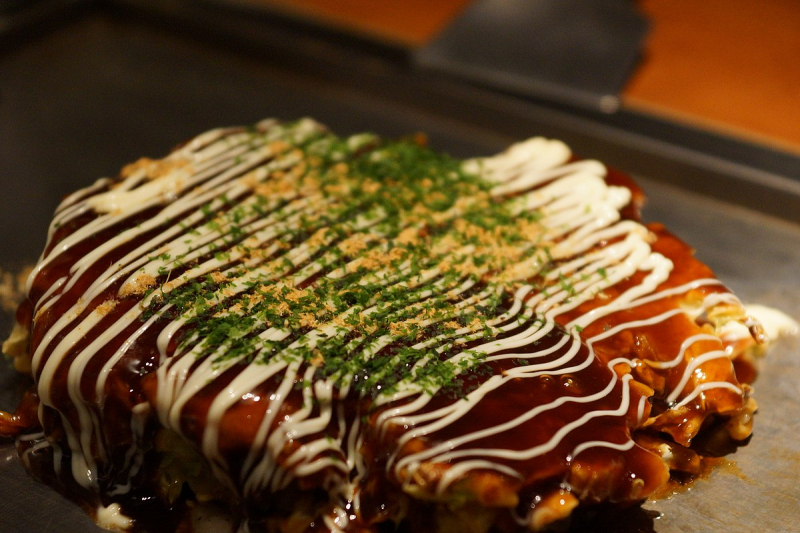
Photo: Wikipedia -
Despite having almost 3 million residents, Osaka successfully combines urban cool with a small-town charm. If you want a lively nightlife after dark, head to the upscale Umeda neighborhood. During the day, unscrupulous housewives looking for a deal will elbow you in the Namba department stores. Visit old-school sushi places hidden away in the lanes or eat at ethnic restaurants in the entertainment districts. Osaka is the spot for you if you yearn for metropolitan diversity but don't feel like leaving your sense of wonder at the front door.
Osaka has you covered if history is your thing. Osaka Castle, a stunning structure constructed in 1583 and perched high above the city, is encircled by a magnificent park. A museum with historical relics is located inside. If you prefer modern architecture, you might be interested in the two-tower Umeda Sky Building, which has a cutting-edge design. The West Tower houses the Koji Kinutani Tenku Art Museum, and the Kuchu Teien Observatory on the rooftop is open until 8.30 p.m. The Abeno Harukas, a 300-meter-tall structure in Tennoji, includes an observatory from which you can see the entire city. It's the ideal location for photos that will make your pals at home envious while also allowing you to appreciate the vastness and magnitude of the region. Meet ABENOBEA, the building's adorable bear mascot, as well.
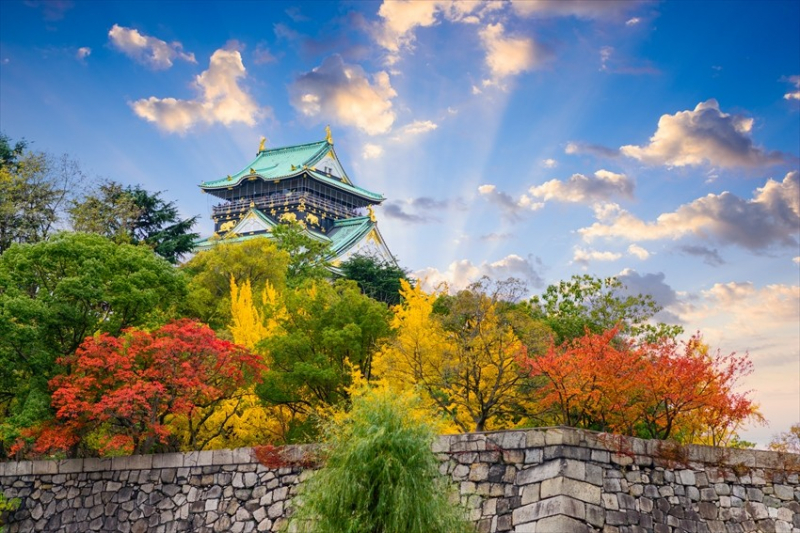
Photo: FUN! JAPAN 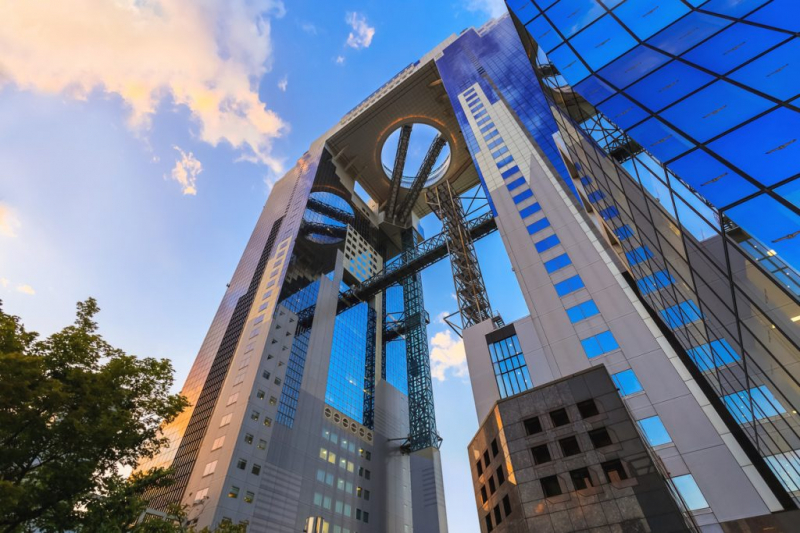
Photo: GaijinPot Travel -
The next reason to visit Osaka is its nightlife. Don't worry if you want to party but are on a tight budget; Osaka has you covered. There are several places to eat and drink in Dotonbori, including both Western standing bars and traditional Japanese izakaya, some of which are referred to as senbero, or places where you can get drunk for less than 1,000. There are also specialty bars devoted to particular alcoholic beverages for people who value quality above quantity. One of the top bars in the world is Bar K, a whiskey-focused restaurant. And a visit to Japan wouldn't be complete without tasting sake, a hot or cold version of the country's famous rice wine.
Shochu is a hard alcohol made from several grains that is frequently drunk on the rocks or in cocktails, but may be unfamiliar to Westerners. If you know your shochu, Kawasaki-ya in Kuromon Market has a large selection, but even if you don't, make sure to ask the bartender for a recommendation before you leave. One additional observation regarding Osaka's nightlife: there is a lot to do, so be aware that many trains stop at midnight and don't resume service until after 5 am. Find an excellent karaoke bar to unwind in until dawn if you get sidetracked and are delayed waiting for the first train.
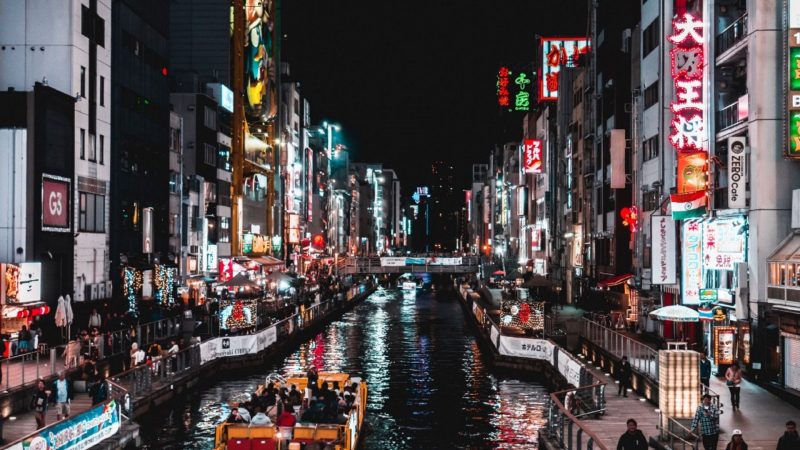
Photo: Japan Web Magazine 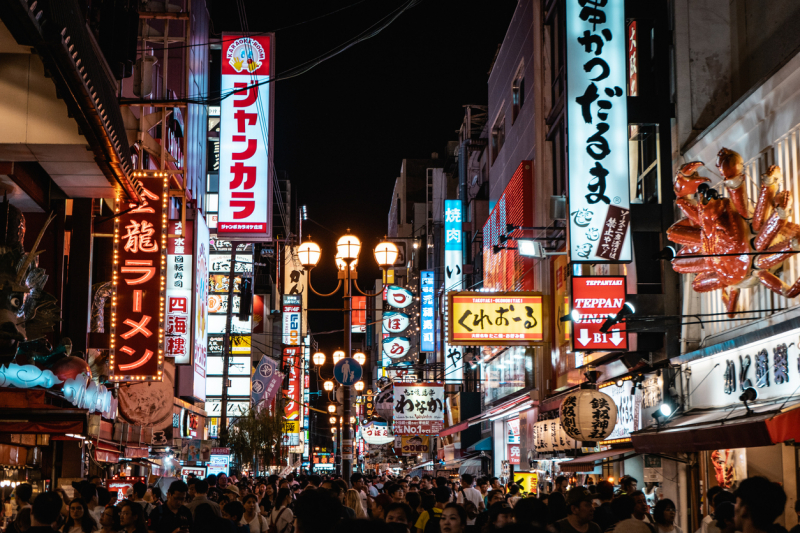
Photo: Travel.Earth -
The enormous hot spring theme park Spa World is located in Osaka's Shinsekai district. The amenities include a number of gender-separated hot spring pools and saunas with various international themes, restaurants, kid-friendly play spaces, sports gyms, tanning beds, massage services, gift shops, and hotels. The European Zone is on the fourth story, while the Asian Zone is on the sixth floor, both of which have natural hot spring swimming areas. Each of these zones has a gender assigned to it, which changes every month.
There are many magnificently themed bathing places in the European Zone, including a Jacuzzi with an Ancient Rome theme, a medicinal bath with a Greek theme, and a Finnish bath house and sauna. In the Asian Zone, there are baths designed in the Persian and Balinese styles as well as more traditional Japanese hinoki cypress wood spas. Mud spas, several types of saunas, and outdoor bathing facilities can be found in both zones. On the third floor, there are 8 stone saunas with international themes. The cost for using these saunas, which are located in a different area from the onsen baths, is 800 yen during the week and 1000 yen on the weekends. Once inside the sauna area, you are free to stay there as long as you like. The last admittance is at 17.00, and this section is open from 10:00 to 18:00. On the eighth story, there is a swimming pool area with rides, water slides, and an outdoor hot tub with a view. Although a bathing costume is required here, you can hire one for 600 yen if you forgot to bring your own. The area's swimming pools are included in the regular admission price, however there is an additional charge to utilize the slides and attractions and many more services.
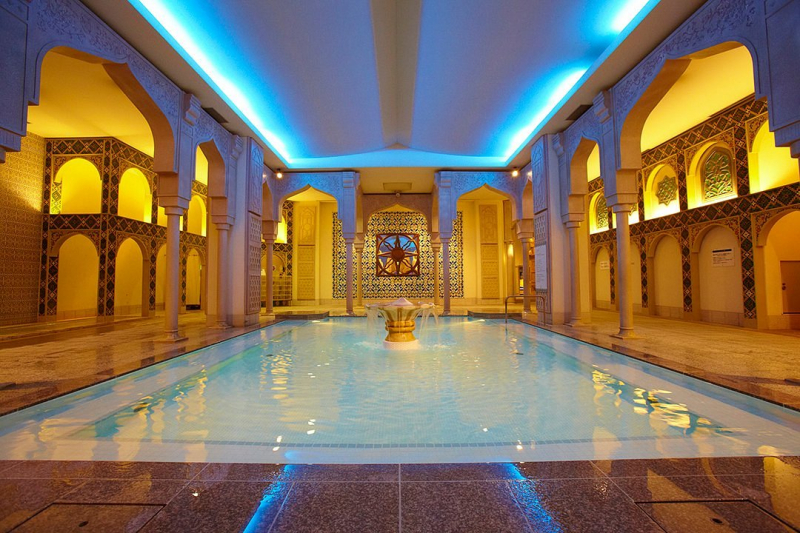
Photo: TripAdvisor 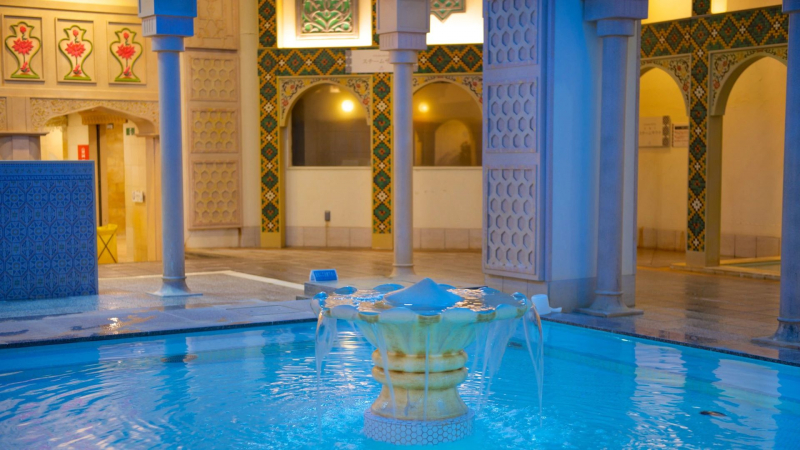
Photo: Expedia -
Puppets art would be the next reason to visit Osaka. Osaka must also have dolls and puppets in addition to its over three million residents. This is because Bunraku, a traditional form of Japanese puppet theater, originated in the city. The astonishingly supple and lifelike puppets will make even the most irate theater averse people confess they are amazing. Additionally, the Kuidaore Taro, a clown-dressed drummer doll, resides on Dotonbori, a busy thoroughfare in the center of Osaka. After the renowned Cui-daore restaurant in Osaka closed in 2008, the Kuidaore Taro was relocated to a nearby retail center. He continues to be a symbol of the city, much like the enormous mechanical crab that welcomes guests to the Kani Doraku crab restaurant.
Japanese puppet theater known as bunraku was first performed in Osaka in the 1680s. It is the oldest and most well-known type of Japanese puppetry. Three puppeteers control bunraku puppets, which are roughly half the size of a human. It can take years to master the techniques required to operate the puppets because bunraku puppetry is a highly slow and delicate art form. The role of Jruri, a blind pianist who performs with the bunraku puppets, is the most well-known bunraku puppet. A puppeteer who also delivers the lines as Jruri performs the role. In Japan, bunraku puppetry is a well-liked type of entertainment, and Osaka and Tokyo both have a number of reputable puppet theaters. Japanese people continue to be drawn to the art form of bunraku, which has been passed down from generation to generation. It is an intangible cultural manifestation that has been recognized as such by UNESCO. Bunraku is distinctive in that it only uses one puppet in the sannin-zukai, which is controlled by three puppeteers. This is the reason why people have visited the theater so frequently over the years.
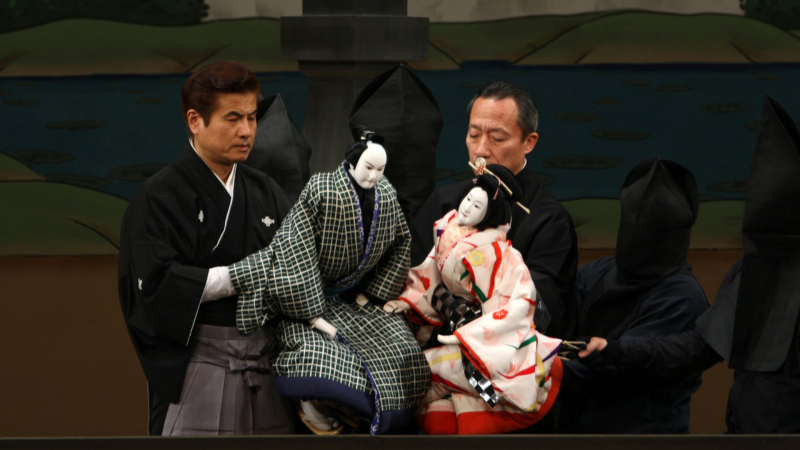
Photo: osaka-info.jp 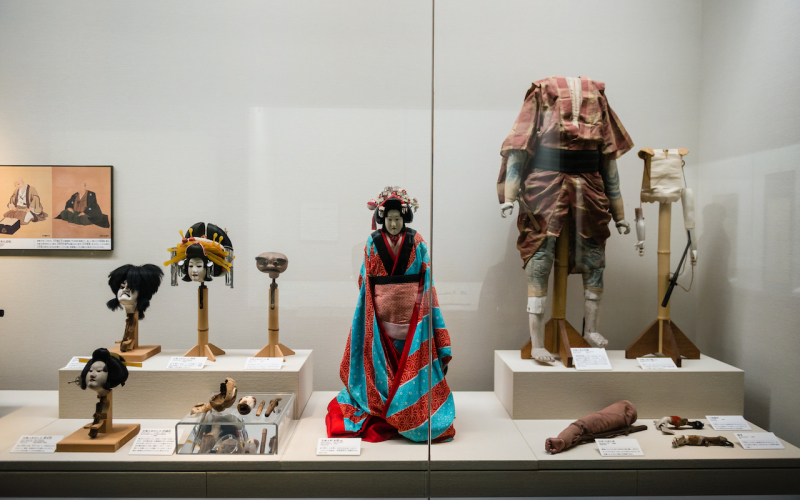
Photo: SilverKris -
The sight of a shark in the sea is one of the few things that can make you cringe, unless, of course, the shark is behind acrylic glass and comfortingly well-fed. At Tempozan Harbor Village's Kaiyukan Aquarium, that is the situation. One of the biggest public aquariums in the world and a favorite tourist spot in Osaka, it often draws throngs of people to its walk-through exhibits of aquatic life. Don't pass up the opportunity to ride the 112.5-meter-high Tempozan Ferris Wheel for a fantastic perspective of Osaka after spending the afternoon at the aquarium.
Osaka Aquarium Kaiyukan is a favorite place to visit when traveling to Osaka. This is one of the largest aquariums in the world. Visiting Kaiyukan Aquarium is sure to impress visitors. This place has large aquariums with a length of up to 34m, a depth of 9m, a capacity of 5,400 tons of seawater that have faithfully recreated the underwater life of marine species in the Asia Pacific region. With 15 expansive aquariums housing more than 620 species and more than 30,000 marine life, visitors can explore the aquatic environment. Osaka Aquarium has established a new theme area called the continent "Antarctica" - imitate the home of Antarctic penguins - with the intention of conveying the enigmatic beauty of the blue sea in the ice continent and the enigmatic creatures living there. The world's largest whale shark, manta rays, and other species may all be seen up close by going through a sizable aquarium tunnel that simulates being submerged in the water while playing with the animals. The aquarium also houses amphibians, reptiles, birds, and mammals, all of which serve as representations of the stunning and diverse natural world. As a result, Osaka Aquarium Kaiyukan is among the intriguing Japanese tourist sites that shouldn't be missed.
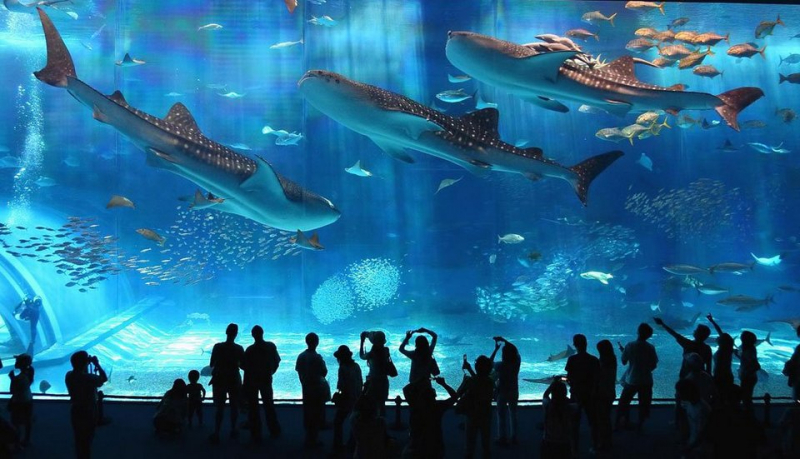
Photo: Living + Nomads 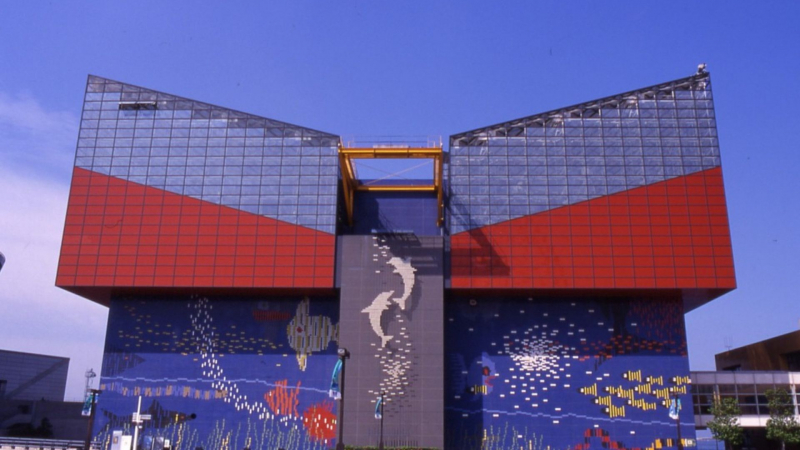
Photo: osaka-info.jp -
The port city of Osaka has been Japan's economic hub for more than a thousand years, making its reputation as a mercantile city even older than its time as the country's kitchen. So what better way to celebrate Osaka's strength in business than to visit one of the city's many top-notch retail areas? Electronics lovers will find paradise in DenDen Town (also known as Nipponbashi), while Shinsaibashi and Midosuji are home to luxury brand retailers. Massive retail malls can be found in Tennoji and Namba, and Amerikamura is a popular location for cool vintage clothing. They're all enjoyable and far less congested than their Tokyo counterparts.
Japanese department shops are distinct from American ones. With everything from clothing and jewelry to mattresses and athletic goods, they can have dozens of floors. Some have multiple floors of eateries as well as groceries on their lower levels. A single department store can keep you occupied for hours in Umeda, Namba, and Tennoji. Tenjinbashisuji, a 2.6-km-long pedestrian path in the town's north, is reputed to be the nation's longest shopping street. It is home to Meiji-era owl cafes, retailers of cheap clothing, and the Osaka Museum of Housing & Living, where you may have your photo taken while donning traditional attire. Don't forget to sample some korokke, a local potato croquette appetizer. Amerikamura, a neighborhood with a lot of restaurants and businesses with American themes, is especially entertaining for Americans. There are many vintage shops that sell pre-owned American clothing, such as T-shirts, coats, and sneakers. Finding anything from your institution or state by rummaging through the racks is a lot of fun. That;s all about the seventh reason to visit Osaka we want to mention.
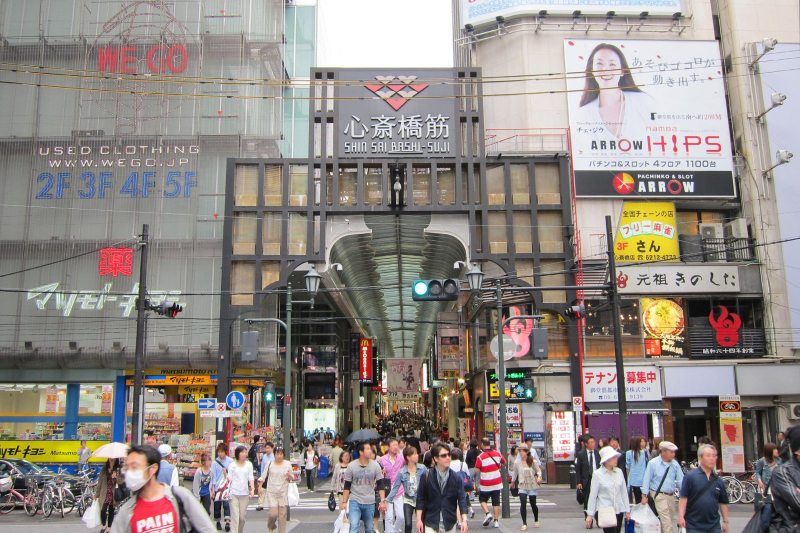
Photo: Hotels.com Australia 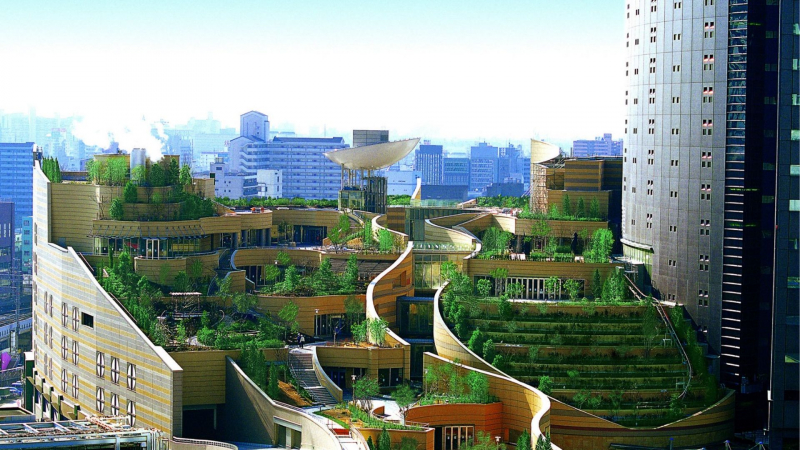
Photo: Japan Web Magazine -
Osakans are known for being honest, outspoken, and above all funny because Osaka is the birthplace of many of Japan's top comedians. But they also have a crazy side. The Kansai region's residents, known as Osaka-jin, are renowned for being helpful and courteous to visitors. Despite the abundance of foreign restaurants and bars, don't be afraid to venture outside your comfort zone and visit a local establishment.
Since Osaka is a large city, English-printed signage is frequently found in public spaces like train stations. Since the majority of Japanese citizens took English as a foreign language in school, it shouldn't be too difficult to find someone with whom to converse if you find yourself in a bind. It doesn't hurt to learn a few Japanese phrases before you go, albeit they could be modest about their English abilities. Additionally, Osaka is renowned as Japan's comedy capital. If you want a genuine experience, there are many chances to observe traditional comedic forms like Manzai and Rakugo. Additionally, you might notice some amusing apparel items strewn about in stores. Feel free to chuckle because everyone is in on the joke!
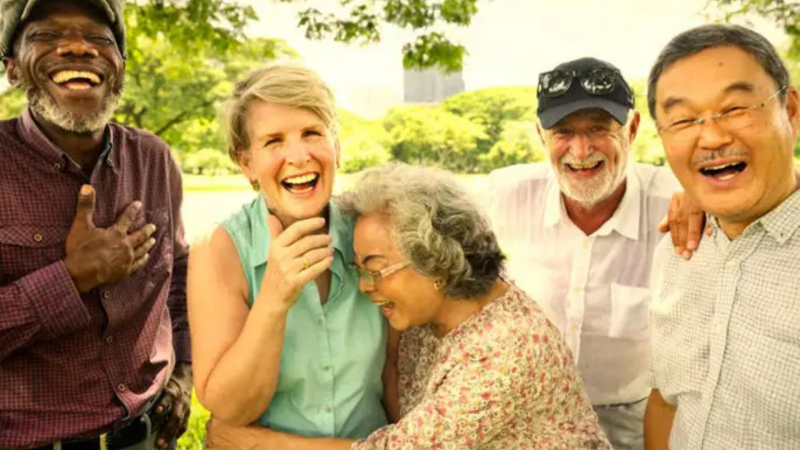
Photo: LIVE JAPAN travel guide 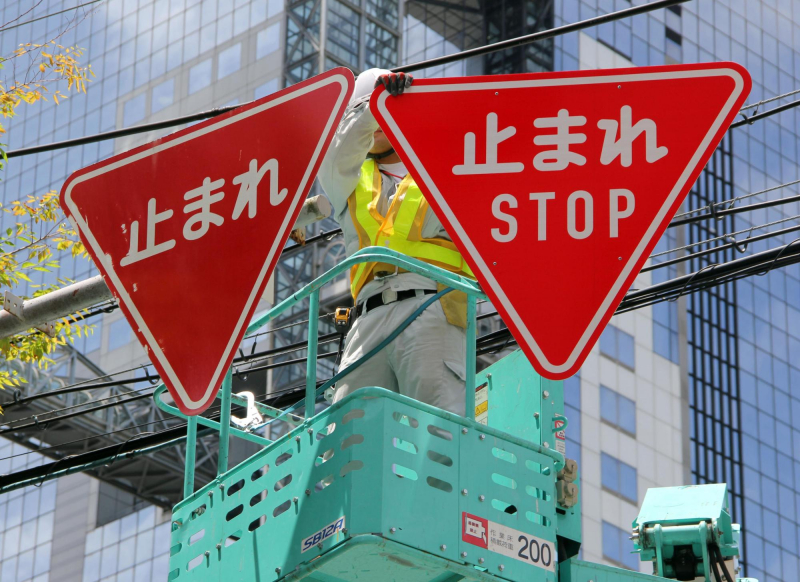
Photo: The Japan Times











